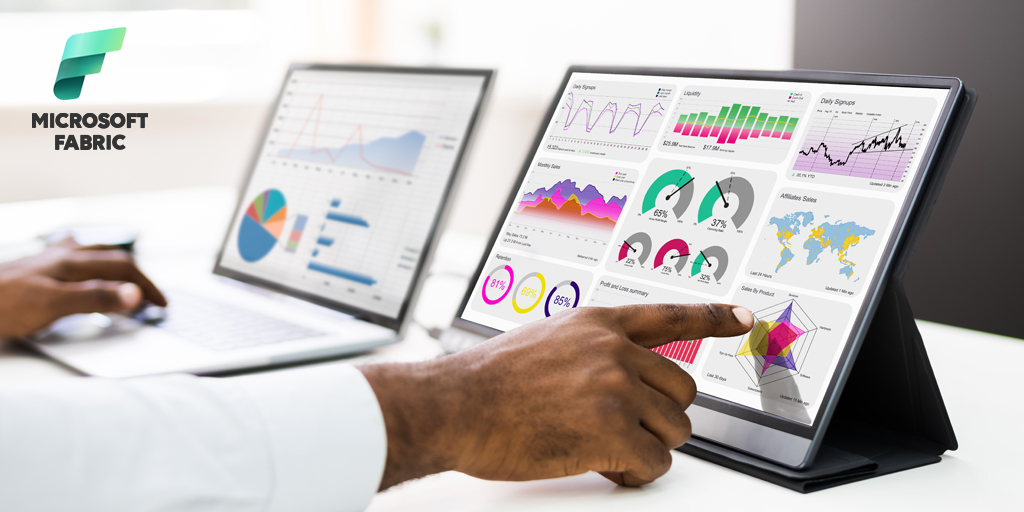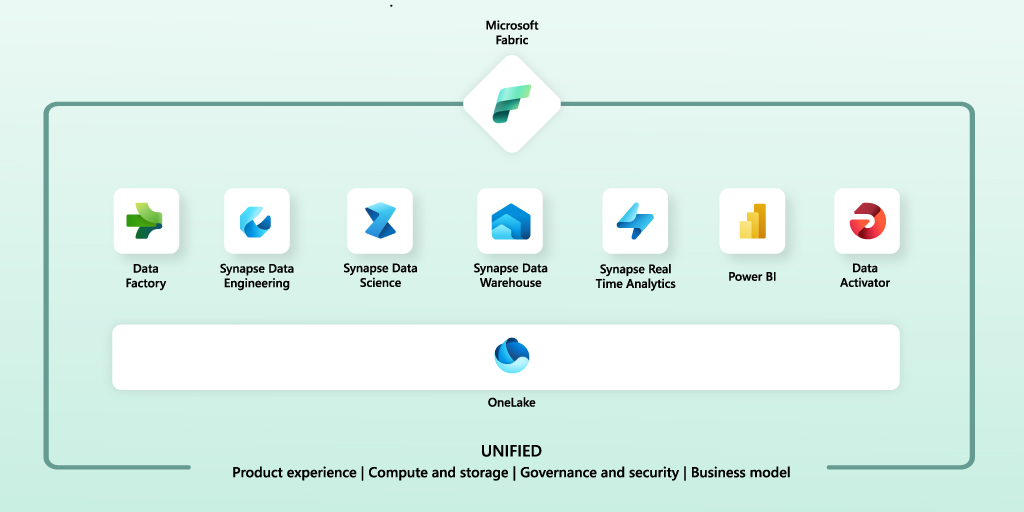Within any organization, various data personas exist, each with unique skills, diverse tasks, and the need to address distinct business inquiries while adhering to specific processes.
The pressing question becomes: How can we empower every data employee to excel, offering swift, effective, and precise solutions? How can we furnish them with the FOUNDATION to craft resilient, adaptable, and safe data operations?
Enter Fabric. It is uniquely designed as a unified SaaS distributed computing platform to handle massive volumes of data with speed, efficiency, and reliability. Fabric is not merely a buzzword in data architecture—its state-of-the-art features promise to transform the entire landscape of data management and processing.
We’ve taken a more straightforward, engaging approach to exploring Microsoft Fabric for data analytics and management. The focus remains on the practical benefits and real-world applications, making it easier to grasp without drowning in technical jargon.
What is Fabric, and What’s in it for me?
Microsoft Fabric simplifies matters by streamlining licensing complexities. You’ll manage all products and services within a single environment. Whether you are a data engineer, a data scientist, or a data analyst, you can collaborate easily within this unified setting. This unification ensures project efforts are directed towards analytical success rather than troubleshooting product integration. Fabric comprises trusted products—Power BI, Azure Data Factory, Dataflow, and Synapse—each with a track record of reliable implementation that organizations can count on.
Fabric offers a single interface to work on our data reporting needs. All tools and viewpoints live under one roof, i.e., under the roof of the Power BI portal. Fabric makes life so much easier, primarily if you work with data day in and day out. Data handling and maintenance are simplified, enabling you to focus more on business innovations and strategies and less on end-to-end data management.
In simpler terms, Fabric offers a bird’s eye view of all your data silos. It provides a comprehensive suite of services, including data lake, data engineering, and data integration, all in one place.
The Nine Key Pillars of Fabric: How can I leverage it?
Whether you are a data scientist, analyst, developer, or steward, Fabric offers many solutions and possibilities for all your requirements.
- Effortless Data Management: Fabric offers an “everything-as-a-service” approach, eliminating the need for complex infrastructure management. With instant provisioning and straightforward onboarding, you can focus on data analysis and less on data management. Integration and optimization occur automatically.
- Centralized Governance: Fabric enables you to manage all organizational data artifacts within a single, secure tenant. Data professionals can collaborate seamlessly without worrying about security or compliance challenges.
- Empowering Business Users: Fabric caters to both technical and non-technical users. Low-code capabilities enable business users to perform data analysis tasks independently, while pro developers can focus on advanced tasks.
- Unified Data Lake: OneLake within Fabric acts as the core data repository. It serves as a central location for all your organizational data, eliminating data silos and inefficiencies. Think of OneLake as a unified data platform similar to OneDrive for all your business documents.
- Lakehouse Architecture: Fabric leverages a lakehouse architecture, combining the flexibility of a data lake with the structure of a data warehouse. Data is stored in the lake using the ACID-compliant Delta Lake format, allowing for efficient processing by engines like Spark and SQL.
- Flexibility for Diverse Data Professionals: Fabric caters to a wide range of data expertise. You can choose between various engines (Spark, SQL, etc.) based on your team’s skillset and project requirements. All users leverage a single data source, eliminating the need for data duplication.
- DirectLake–Power BI Revolution: Fabric introduces DirectLake mode for Power BI, enabling direct data querying from OneLake without copying it. This eliminates performance limitations typically associated with DirectQuery mode and delivers real-time data insights.
- Seamless Integration with Office Tools: Fabric integrates seamlessly with familiar Office tools like Excel, PowerPoint, Teams, and Outlook. You can share data-driven insights effortlessly within your organization’s workflow.
- Robust Security and Governance: Fabric prioritizes data security and governance. Data lineage and information protection labels ensure data traceability and adherence to compliance regulations. A centralized admin center simplifies administrative tasks.
Lakehouse or Warehouse? What works best for Fabric?
OneLake is the central storage for all data within Fabric, regardless of the chosen processing method (Lakehouse or Warehouse).
- Lakehouse is ideal for teams comfortable with Spark notebooks for data loading, transformation, and curation.
- Warehouse supports traditional T-SQL language for data manipulation, catering to teams familiar with this approach.
The choice between Lakehouse and Warehouse depends on your data engineering team’s skillset and preferences. Fabric facilitates cross-database queries, allowing you to combine the strengths of both approaches without data movement.
If I were to leverage Fabric, what should I look out for?
Fabric’s core concepts position Microsoft as a strong enterprise data analytics landscape contender. To leverage Fabric, you must consider:
- Cost: Fabric utilizes F SKUs for capacity, offering a lower entry point than Power BI P SKUs. However, Power BI Pro licenses are required for users consuming Power BI content with Fabric SKUs smaller than F64.
- Azure Synapse Analytics Integration: While Fabric incorporates elements of Synapse Analytics, existing Synapse users can integrate their workspaces into the new Fabric experience. New customers may find Fabric’s cost structure and features more compelling.
Want to leverage the power of Microsoft Fabric? PreludeSys, a Microsoft-featured partner, offers data integration services and Microsoft fabric consulting services to streamline your data journey. Contact us today!










